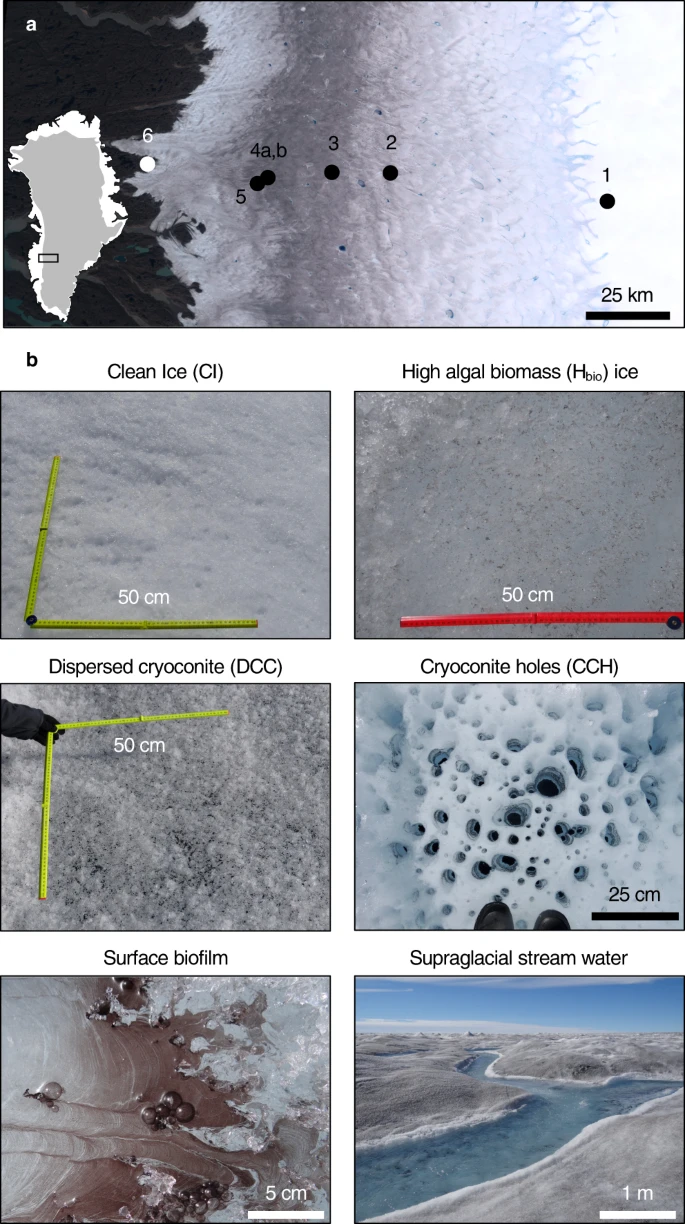Science Daily January 25, 2021
Melting of the Greenland Ice Sheet is a leading cause of land-ice mass loss and cryosphere-attributed sea level rise. Blooms of pigmented glacier ice algae lower ice albedo and accelerate surface melting in the ice sheet’s southwest sector. Although glacier ice algae cause up to 13% of the surface melting in this region, the controls on bloom development remain poorly understood. An international team of researchers (US, Canada, Germany, Denmark) has shown a direct link between mineral phosphorus in surface ice and glacier ice algae biomass through the quantification of solid and fluid phase phosphorus reservoirs in surface habitats across the southwest ablation zone of the ice sheet. They demonstrated that nutrients from mineral dust likely drive glacier ice algal growth, and thereby identify mineral dust as a secondary control on ice sheet melting…read more. Open Access TECHNICAL ARTICLE

Sample collection locations and habitats on the Greenland Ice Sheet. Credit: Nature Communications volume 12, Article number: 570 (2021)